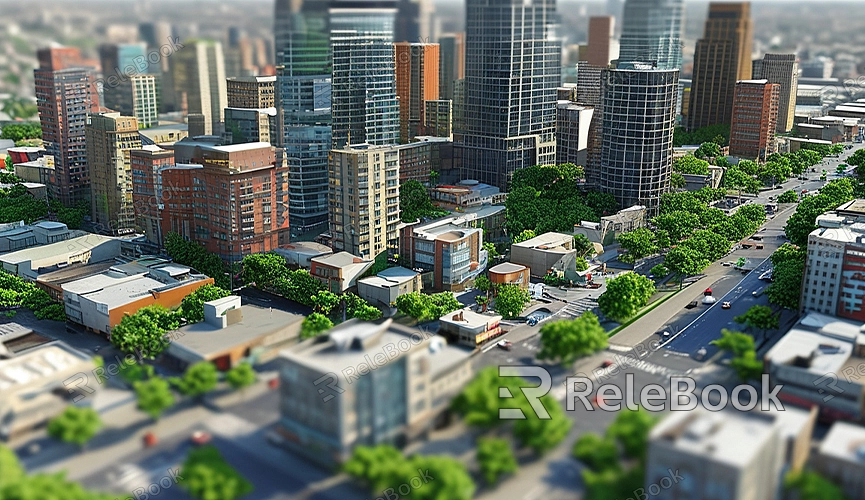How to Render Intro Templates in Blender
Blender, as a powerful open-source 3D software, is widely used in animation, modeling, and rendering. For video creators and designers, creating and rendering intro templates is a common need. With Blender, you can craft impressive intro animations to enhance the visual appeal of your videos. This article provides a detailed guide on how to render intro templates in Blender, helping you quickly produce high-quality results.
Selecting and Importing Intro Templates
First, you need to find a suitable intro template. There are many free Blender intro templates available online. Choosing one that fits the style of your project is crucial. Here’s how to import a template:

1. Download the Template File: Most intro templates are provided in the .blend format, so make sure to download a file compatible with your version of Blender.
2. Import into Blender: Open Blender and use the "File" menu's "Open" option to import the downloaded .blend file.
3. Check the Scene: After importing the template, it’s recommended to inspect all elements in the scene to ensure they meet your needs. You can adjust text, colors, lighting, and camera settings as needed.
Editing and Customizing Templates
Once the template is imported, you may need to edit it to match your brand or video content. Here are some common customization steps:
Modify Text and Fonts
Most intro templates include editable text. To change the text and fonts:
- Select the Text Object: In the 3D view, right-click on the text part and enter Edit Mode.
- Edit Text Content: In Edit Mode, directly type the new text. You can also modify the font, size, and color in the properties panel on the right.
- Adjust Text Animation: Some templates come with text animation effects. You can adjust keyframes' positions in the Timeline panel to change the timing and speed of the animation.
Adjust Lighting and Materials
To make the intro more engaging, you may want to adjust lighting and materials:
- Edit Lighting: Locate the light objects in the scene, go to the "Light" settings panel, and adjust the intensity, color, and direction to ensure they harmonize with other elements in the scene.
- Modify Materials: Select the objects you need to modify, and change colors, reflectivity, or add textures in the Materials panel to enhance visual effects. If you need high-quality 3D textures and HDRIs for your models and virtual scenes, you can download these resources for free from [Relebook](https://textures.relebook.com/), which will help you showcase material details more effectively.
Setting Up Camera and Rendering Parameters
After customizing the intro template, the next step is to set up the camera and rendering parameters, which determine the final quality of your video.
Adjust Camera Position
The camera angle and position will affect the composition of the final shot, so adjustments are essential:
- Select the Camera: Find the camera object in the scene, and use the “G” (grab) and “R” (rotate) keys to adjust the camera's position and angle, ensuring all important elements are within view.
- Set Camera Focal Length: In the camera’s properties panel, adjust the focal length to change the perspective. Typically, a shorter focal length provides a wider view.
Rendering Settings
Rendering settings directly impact the output quality and rendering time. Key rendering settings include:
- Choose the Render Engine: Blender offers several rendering engines (e.g., Eevee and Cycles). Eevee is suitable for quick previews and simpler render tasks, while Cycles is better for high-quality final renders.
- Set Resolution: In the "Output Properties" panel, select an appropriate resolution. Typically, 1080p (1920x1080) is a common choice for intro renders.
- Adjust Sampling: Sampling affects image clarity and noise levels. Increasing the sampling number can produce higher-quality output.
Rendering and Output
When all settings are complete, you can start rendering your intro template:
- Save Your Project: Before rendering, make sure to save your project to avoid losing your work.
- Start Rendering: In the "Render" menu, select "Render Animation." Blender will render the entire intro animation frame by frame.
- Choose Output Format: In the output settings, select an appropriate file format (such as MP4 or AVI) and set the file path for easy editing or uploading later.
Creating and rendering intro templates in Blender is both a fun and practical process. Whether modifying an existing template or creating one from scratch, Blender provides powerful tools and flexible settings to help you achieve various creative ideas. If you need high-quality 3D textures and HDRIs for your models and virtual scenes, download them for free from [Relebook](https://textures.relebook.com/). For exquisite 3D models, visit [Relebook](https://3dmodels.relebook.com/). Relebook offers a wealth of premium 3D resources to help you complete your design and rendering tasks with ease.

